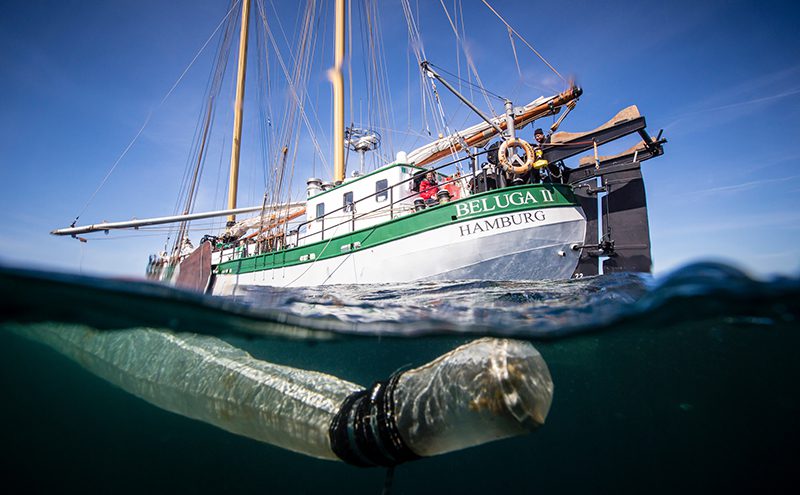
Microplastics found in two thirds of samples, many carrying toxic chemicals
The results from Greenpeace’s 2017 ship tour of Scotland – published on 7 March – appear to confirm the widespread contamination of fish with microplastic.
Scientists on the ship employed a number of methodologies to gather data on plastic pollution in Scottish waters – seemingly more than any previously published survey. The most complicated procedure was a survey of microplastics on the sea surface from 49 samples taken at 27 different locations around the Scottish coast and islands.
Scientists on-board the Greenpeace ship MV Beluga II collected samples with a focus on areas around the Hebrides known to be important feeding grounds for basking sharks and seabirds. Seawater samples were collected in key foraging areas and around internationally significant seabird colonies including Bass Rock and the Shiant Isles, which are the home to over 20 seabird species including gannets, puffins, razorbills and shearwaters.
A total of 49 individual samples were then analysed by Greenpeace’s laboratory at the University of Exeter to determine the types of microplastics found, and any chemicals or contaminants carried on individual microplastic pieces. Despite the remoteness of Scottish coastal waters, and the low levels of coastal development of the areas surveyed, 31 of 49 samples tested contained microplastics.
Tisha Brown, Oceans Campaigner for Greenpeace UK, said –
“Although microplastics were found in two out of three samples, this isn’t all bad news. The concentrations are lower than in many other regions of the world’s oceans, and hopefully Scottish marine life is at a proportionately lower risk than marine life in those areas. However, the results varied significantly in unpredictable ways, and so we would need longer-term testing to be confident of average concentrations.
But the key finding here is that microplastics are present in some of Scotland’s most remote and unspoilt waters. Threatened seabirds and other wildlife are already exposed to them, along with the fish stocks we eat, and there is currently no coherent process or even plan to stop this problem from getting worse.”
Because of their synthetic nature and their propensity to adsorb, or attract, chemicals from seawater on to their surfaces, microplastics can also carry substantial concentrations of a range of chemical additives and contaminants. Chemicals found in the samples include those used as additives in plastics like phthalate esters, heavy metals and flame retardants – some of which have been classified as ‘toxic to reproduction’ or are suspected to have hormone disrupting properties.





